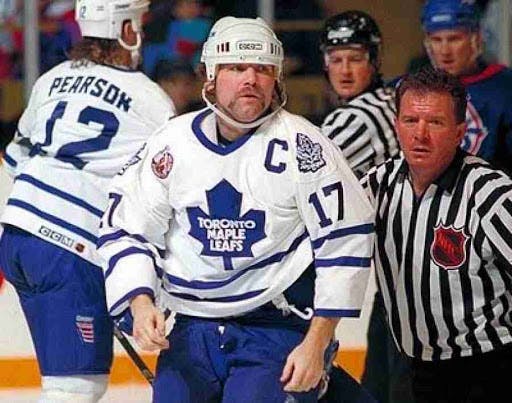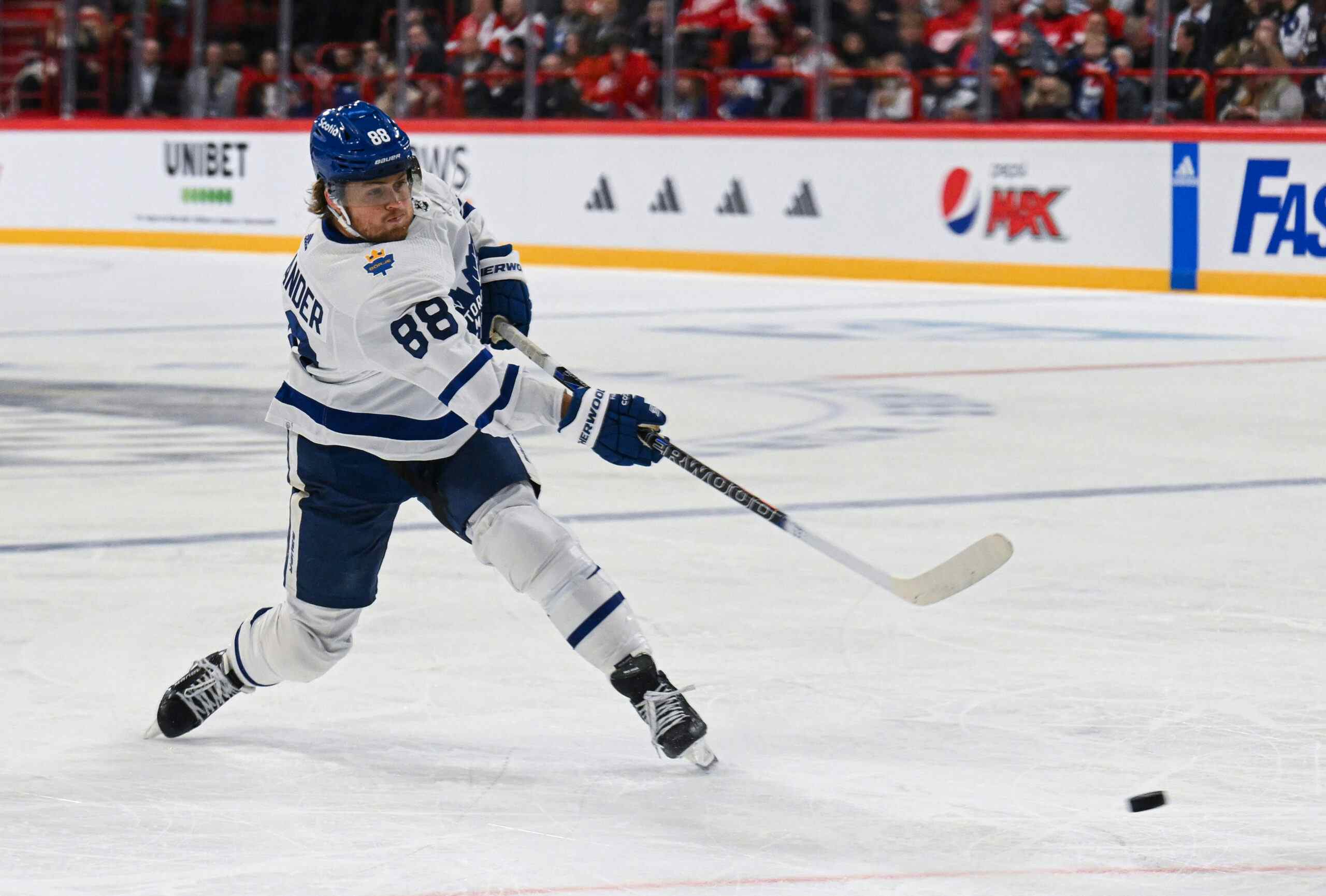Revisiting the Wendel Clark trades

By Cam Lewis
4 years agoThe Wendel Clark trades represent the best and the worst of Cliff Fletcher.
Clark was the team’s first-overall pick in 1985, the prize for the worst season in franchise history when the Leafs, who were right in the heart of the infamous Harold Ballard Years, won only 20 games.
Out of the Western Hockey League came Clark, a big, tough, physical defenceman who played with a punch. In Junior, he was known not only for his toughness but also for his ability to create offence from the blueline. The Leafs saw this, did the math in their head, and decided his talents would be best served as a forward in the NHL, so they had him switch positions after being drafted.
He quickly won over the hearts of Leafs fans, bringing a spark to a lifeless team in the darkest period in franchise history. He came into the league as a 19-year-old and buried 34 goals and racked up 227. He could put the puck in the net and he would punch anybody in the face. That offensive prowess along with that toughness was the perfect blend for play in the 1980s.
Clark helped the Leafs return to respectability in his first two seasons in the league. He tallied 34 and 37 goals in his rookie and sophomore seasons and the Leafs won playoff rounds each year. But in Clark’s third season, he suffered a brutal back injury that would put a wrench in his development as a player. He missed a good chunk of the 1987-88, 88-89, and 89-90 seasons due to injury and the Leafs struggled because of it.
In 1991-92, Clark was named the team’s captain after Rob Ramage was claimed in that summer’s expansion draft. After missing the playoffs that season, Clark helped lead the Leafs to their best season in franchise history. Toronto reached the Conference Finals where they would get stopped by the Wayne Gretzky-led Los Angeles Kings in seven games. Clark added to his legacy in Toronto
that series, fighting Marty McSorley and scoring a hat-trick in Game 6.
Failed to load video.
I know this is a lot of preamble before the actual crux of the post, but it’s important to establish exactly what Clark was to this team and fanbase. Millennial fans might scoff at it, but there’s a reason Clark is your uncle’s favourite Leaf of all time.
Clark would put up the best season of his career the following year in 1993-94, scoring 46 goals in 64 games. He would help the team on another deep playoff run, reaching the Conference Finals yet again. This time, they were stopped by the Vancouver Canucks, who were going on their Cinderella run.
After that, general manager Cliff Fletcher decided it was time to sell high. Clark’s 46 goals was an explosion from what he had done in previous seasons. It was his first time breaking the 20-goal plateau since his first two seasons in the league and, at the age of 27, he wasn’t getting any younger.
Fletcher pulled the trigger on a deal that would rattle the city. He traded Clark, the heart and soul who had captained the Leafs to back-to-back deep playoff runs, to the Quebec Nordiques for some young Swedish kid. The trade, all told, was Clark, Sylvain Lefebvre, Landon Wilson and the No. 22 1994 draft (Jeff Keatley) in exchange for Mats Sundin, Garth Butcher, Todd Warriner, and the No. 10 in the 1994 draft (Nolan Baumgartner).
Despite the other parts involved, this deal was about trading Clark for Sundin.

As much as Leafs fans might have hated it at the time because of what Clark represented — he was coming off his best season and he was still viewed as the turning point from the darkest time of the Ballard days — Sundin was a massive addition for the Leafs. Quebec traded away a 23-year-old star in the making. The first-overall pick from the 1989 draft was just one year removed from a breakout 47-goal, 114-point showing with the Nordiques and he would be the young centre for the Leafs to build around.
Elsewhere, Clark had a very short tenure in Quebec, though that isn’t really a fault of his own. Clark scored 30 points in 37 games in the Nordiques’ final season in Quebec before they packed up and moved out west to Colorado to become the Avalanche. Clark would never play for the Avs, though, as he was dealt in a one-for-one swap to the Islanders for Claude Lemieux, who played a key role in their 1996 Stanley Cup victory.
The Leafs would make the playoffs in the lockout-shortened 1994-95 season with Sundin leading the way with 47 points in 47 games, but they got dropped in the first round. The following season, Fletcher, who had his eyes on the future just a couple of years earlier, directed his focus to the present, aiming to cash in on an ageing roster that featured a 32-year-old Doug Gilmour, a 34-year-old Larry Murphy, and a 36-year-old Mike Gartner.
The Leafs sat with a mediocre 28-32-12 record heading into the 1996 trade deadline. With the team on the verge of missing the playoffs, which would have been a colossal letdown for a group with contention aspirations, Fletcher pulled the trigger on a deal to give the Leafs a spark. First, he sent a 1996 first, 1996 fourth and a 1997 second-rounder to the Flyers for defenceman Dmitri Yushkevich. After that, he made a huge splash, dealing Sean Haggerty, Darby Hendrickson, Kenny Jonsson, and a 1997 first-round pick to the Islanders for Mathieu Schneider, D.J. Smith, and Clark.
Fletcher was all in. There were his first picks in both 1996 and 1997 gone. This had to turn into something. I mean, at the very least, fans were happy to have Clark back…
Failed to load video.
Acquiring their old captain seemed to fire up the Leafs, as they went 8-4-1 to finish the season, sneaking them into the playoffs and earning a first-round match-up with Wayne Gretzky and the St. Louis Blues. The playoff run would last six games. So much for that!
It’s not Clark didn’t contribute, or anything. He put up 15 points in 13 games in his triumphant return, including four in six playoff games. The issue was that the Leafs dove into trying to open a contention window that wasn’t there. The following season, they would fall flat, missing the playoffs by a 13-point margin. In his final move as general manager, Fletcher dealt away Gilmour to the New Jersey Devils.
The worst part about that season? As the losses piled up, there wasn’t even a first-round pick to look forward to. The 1997 first-round pick was the property of the Islanders due to the deadline deal the previous season. When it was all said and done, the Leafs finished with a 30-44-8 record and the Islanders got the fourth-overall pick as a result.
Failed to load video.
The Islanders used that pick to draft Roberto Luongo from the Val d’Or Foreurs. Right after he was drafted, Bob McKenzie described Luongo as a future franchise goaltender, along the lines of Patrick Roy. And that’s exactly what he became. Well, not for the Islanders. New York ended up dealing him and Olli Jokinen in a hilariously lopsided deal to Florida for Oleg Kavasha and Mark Parrish.
At the end of the day, what we have here is the best and the worst of Fletcher. And, well, really, two trades on the opposite end of the spectrum in the entirety of the Leafs’ history. On one hand, you had the savvy move to sell high on Clark and acquire a young star in Sundin, who, of course, ended up being arguably the greatest Leaf of all-time. On the other hand, though, you had the desperation of Fletcher, giving away future draft picks like Halloween candy in order to make a run with an ageing roster.
It’s interesting to think what would have happened if Fletcher just stood still ahead of the deadline in 1996. If the Leafs missed out and kept rebuilding, what would have become of their 1996 and 1997 first-round picks?
Does Gilmour get traded sooner? is the return better than the wildly underwhelming one Fletcher got from New Jersey? Does that pick in 1997 end up being first- or second-overall if the Leafs go all-in on a rebuild instead of trying to chase the impossible dream?
Recent articles from Cam Lewis





